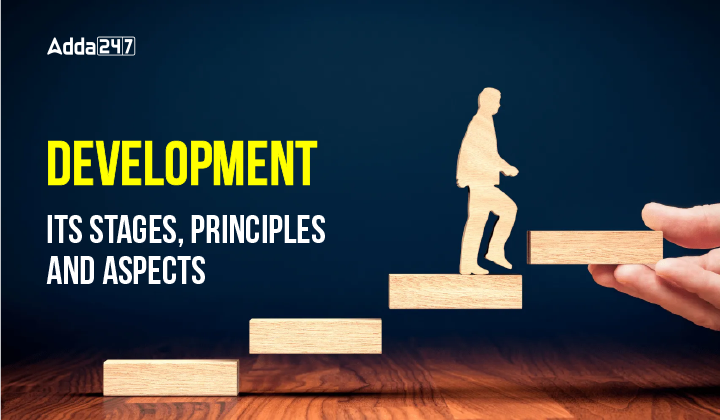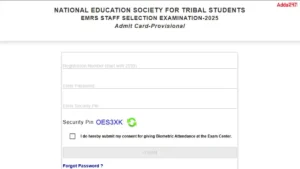Table of Contents
Development: its Stages, Principles and Aspects. Development is main topic which carries 4-5 questions in Child Development Section. Development topic contains stages, principle, and its aspects. It also explain physical development of child in infant, childhood, adulthood. Development is vast in every way i.e. physical, emotional, mental etc. Here we are going to learn development in details.
What is Development
Development refers to qualitative changes taking place in an individual simultaneously with quantitively changes of growth. Development not only represent changes in an organism physically from its origin to its death but more particularly it is the progressive changes with take place from its origin to maturity.
Basic Principles of Development
The understand the complex process of development, various schools have propounded the following principles.
- Principles ff Individual differences
- Principle of Uniform – pattern
- Principle of Removal of Undesirable Behaviour
- Principle of Continuous Development
- Principle of General of Specific
- Principle of Development Sequence
- Principle of Different Rate of Development
- Principle of Interaction of Heredity and Environment
Stages of Development
| Age groups आयु समूह | Related stage सम्बंधित चरण | Schooling stage स्कूल के चरण |
| 0 – 1 | Newborn नवजात शिशु | – |
| 1 माह – 1 वर्ष | Infant शिशु | – |
| 1 वर्ष – 3 वर्ष | Toddler घिसटने वाला शिशु | – |
| 4 वर्ष – 6 वर्ष | Early childhood प्रारंभिक बाल्यावस्था | Pre – primary पूर्व – प्राथमिक |
| 6 वर्ष – 12 वर्ष | Later childhood उत्तर बाल्यावस्था | Primary प्राथमिक |
| 12 – 18 वर्ष | Adolescence किशोरावस्था | Secondary and senior secondary माध्यमिक और वरिष्ठ माध्यमिक |
| 18 – 40 वर्ष | Young adulthood युवा वयस्कता | – |
| 40 – 65 वर्ष | Adulthood वयस्कता | – |
| 65 वर्ष and above | Mature adulthood परिपक्व वयस्कता | – |
Aspect of Child Development
Child development is based on following aspects:
- Growth in height and weight
individual generally occurs over the 15 – 20years following birth. Genetic factor plays an important role in determining the growth rate.
- Motor development
It refers to change in movement pattern (involuntary) of an young infant to highly skilled voluntary movement characteristics of later childhood and adolescence.
- Cognitive / intellectual development
The capacity to learn, remember, symbolize Information and to solve problems at a simple level in an infant to much higher level increase till Adolescence. Memory becomes increasingly longer and the capacity for abstraction developed until near adult level.
- Social emotional development.
The capacity for empathy and the understanding of social rules begin in the preschool period and continue to develop till adulthood.
- Language
A child must Attain competence in phonology, semantics, syntax and pragmatics of low language is used in different Contents.
Physical Development In Childhood
- Weight (weight of a male child is always more than the girl child)
- Weight of the child at birth- 7.15
- Weight of the child in the first six months – Double(approx.)
- Weight of the child at the end of the year – three Times (approx.)
- Rate of increase in weight during second month – lb/month
- Weight of the child in five years- About 38-43lbs
- Length (length of a male child in always more than the girl child)
- Length of the child at birth- About20.5 inches
- Length at the end of the year- About 30.5 inches
- Length at the end of second year- Increases by 4.5 inches
- Head and Brain
- The shape of head continues to change during childhood.
- Upto 5 years of age size of the head increases 90% of the adult head
- By the age of 10 years size of the head becomes 95% of adult head
- Length of the head of head newborn- body’s length.
- Weight of the brain of newborn-350gm(Approx.)
- Bones
- Total bones in the new born=270
- Process of ossification continues.
- Teeth
- Growth of milk teeth at the age of six month
- Number of teeth at the age of one year = 8
- All the milk teeth grow by the age of 4
- Milk teeth area a replaced by permanent teeth
- By the 12th year of age all the teeth become permanent
- The number of teeth can be 28-32
- Development in Other Organs
- Weight of muscles in newborn 23% of the total body weight.
- Frequency of heart beats during first month 140/min.
- Frequency of heart beats at the age of six 100/min.
- All the organs grow by the age of six, expecially the upper part.
- Legs and hands develop at a faster pace
Physical Development in Adolescence
Adolescence is the climax of physical development because physical development at this stage acquires permanent shape.
| Physical Development | Development |
| Weight | Weight of male child increases mere than the weight of girl child. At the end of this phase the weight of male child becomes about 25lbs mare than the weight of girl child |
| Length | During adolescence, length of male- female increases at a faster pace. Length of a male child, mare or less increases upto the age of 18 years. The girls have increment in length upto 16 years of age. |
| Head and Brain | The development of head and Brain remain continue at this age. The head develops complete and weights around 1200-1400gms. |
| Bones | This stage is known for ossification process. The bones becomes very strong and some small bones get united. |
| Teeth | Upto this stage all the permanent teeth grow. |
| Development of Other Organs |
|




 EMRS Admit Card 2025 Out for 21 December...
EMRS Admit Card 2025 Out for 21 December...
 Manipur PSC Assistant Professor Recruitm...
Manipur PSC Assistant Professor Recruitm...
 Rajasthan Pre Deled BSTC 2026 Notificati...
Rajasthan Pre Deled BSTC 2026 Notificati...












